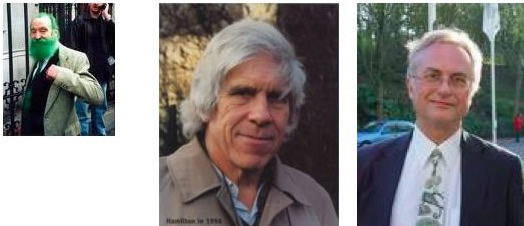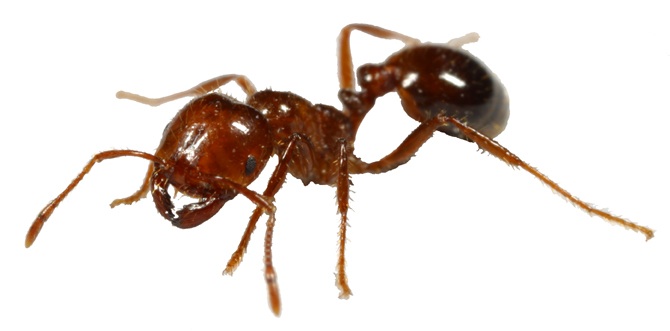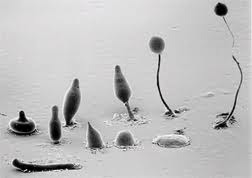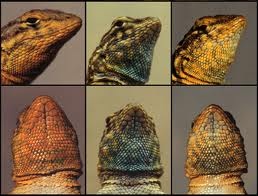 Animal Behavior
Animal Behavior
Biology 342 Fall 2010
Week 12
Nov. 15th
The Adaptationists Programme and Counter Point
DISCUSSION DAY (download .pdf with these questions)
The Goal of this exercise is for students to become familiar with some intellectual debate surrounding “adaptation” and the “adapationists programme” (as Gould and Lewontin have dubbed it).
It is essential that you examine these papers with the intent of formulating you own ideas about the utility of Gould and Lewontin’s critique of an entire body of research and the validity of Ernst Mayr’s rebuttal. Both papers should be read critically and balanced with your modern approach to evolutionary biology and behavior as a phenotype.
Answer #1 or #2 AND 1 from among #3, #4, and #5
Type the answers. Bring them to class. Be prepared to discuss and amend your answers.
 1) Gould and Lewontin use metaphors (the basilica of St. Marks, and Voltaire's Candide) in order to ridicule a scientific research approach that they deem inappropriate. Mayr contradicts these authors in a more straightforward manner and ultimately supports the use of adaptationist research. Compare and contrast the writing style in these two papers. (There is a book, Understanding Scientific Prose, that is dedicated to the discussion of Gould and Lewontin's writing technique)
1) Gould and Lewontin use metaphors (the basilica of St. Marks, and Voltaire's Candide) in order to ridicule a scientific research approach that they deem inappropriate. Mayr contradicts these authors in a more straightforward manner and ultimately supports the use of adaptationist research. Compare and contrast the writing style in these two papers. (There is a book, Understanding Scientific Prose, that is dedicated to the discussion of Gould and Lewontin's writing technique)
2) Who are (were) Stephen J. Gould, Richard Lewontin, and Earnst Mayr? Why are these men qualified to debate the topic of Adaptationist program? (you'll have to look outside these papers to answer this one.
3) Define atomization and Bauplan and discuss their relative role in an adaptationist program.
4) According to Gould and Lewontin, adaptationists construct faulty explanations when they fail to consider options other than that the trait arose through natural selection. Provide a few of their examples of faulty logic and consider whether Mayr would agree with these criticisms.
5) Mayr makes recommendations about how an adaptationist program should be executed. Discuss those recommendations in your own words while comparing and contrasting them to the "Alternative Strategies" as outlined by Gould and Lewontin.
READ:
Gould & Lewontin (1979) Spandrels of St. Marco and the Panglossian Paradigm: a critique of the adaptionist program PRS 205:581-598.
Mayr (1983) How to Carry out the Adaptionist Program? Amer Nat 121:324-334.
EXTRA READING (not required):
The Gould and Lewontin paper created a great stir, and has been read
by all evolutionary biologists, most behavioral biologist, all ecologists,
and many other scientists. Their writig style is far from scientific. This
single paper is the focus of an entire book that examines the style more
than the content. I wouldn't expect you to read that book but the following
paper presents and interesting and very entertaining stylistic critique.
Queller (1995) The Spaniels
of St. Marx and the Panglossian Paradox: A critque of a rhetorical programme.
Quart. Rev. Biol 70:485-489.
Nov. 17th &19th
Cooperation, Kin Selection, Game Theory and Green Beards
W. D. Hamilton's theory of kin selection, published in 1964, reshaped how biologists think of animal behavior. His theory caused biologists to see that familial relationships are a critical element of animal behavior. This, in turn, led to the application of molecular technology in animal behavior studies. Kinship is a key element of most contemporary field studies of social behavior in animals. An animal has two ways of gaining fitness. The first, and obvious, is to reproduce. The second is less obvious; an animal can gain fitness by aiding close relatives. This is kin selection, which relies on a concept call "inclusive fitness". Close relatives share genes (have genes that are identical by descent). The book "The Selfish Gene" was the first to really popularize this idea and put it in laymans terms. A classic, that book is still worth reading.
What do these things have in common?




READ (required)
Dugatkin chapter 8 & 9
Axelrod, R. and Hamilton, W.D. (1981) The Evolution of cooperation. Science 211:1390-1396.
EXTRA READING (to answer the above question):
Sinervo et al 2006 Self-recognition, color signals, and cycles of greenbeard mutualism and altruism. PNAS 103:7372–7377.
Queller et al 2003 Single-Gene Greenbeard Effects in the Social Amoeba Dictyostelium discoideum. Science 299:105-106.
Keller, L., and Ross 1998 Selfish genes: a greenbeard in the red fire ant. Nature 394:573-575.